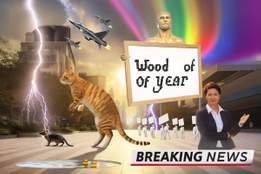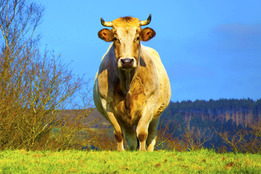
Introduction
Fantasy worlds, whether in gaming, literature, film, or elsewhere, have their own vocabularies, and the role-playing game Dungeons & Dragons—created by American game designers Ernest Gary Gygax and David Arneson in 1974—is certainly no exception.
D&D has gone through multiple editions, with various changes to the rules and nomenclature. The game is set in a medieval fantasy world in which multiple players form a group that is led through an adventure by one player who assumes the role of the storyteller, or Dungeon Master. The Dungeon Master makes up story events or chooses them from one of the published adventures, to which the players may respond in different manners to create a unique gaming experience. The other players each choose a race (such as a human or elf), a class (e.g., fighter, rogue, wizard), and skills for their character, and they apportion a small number of points to different attributes (Constitution, Strength, Dexterity, Intelligence, Wisdom, and Charisma) that determine how effective a character is in performing various actions. Most complex actions have some probability of failing, which is determined by rolling one or more of the game’s polyhedral dice. Often players use a sheet marked with a grid and miniature figurines to represent their characters’ movements.
Some D&D nomenclature has been invented out of whole cloth (like the evocative compound “mind flayer,” referring to an enemy species who can control your mind, though they are also known to devour the living brains of their prey). Other D&D vocabulary borrows from established English words, often of Greek, Latin, or Scottish origin.

Cantrip
M-W definition : Scotland : a spell or witch’s trick, or a mischievous or extravagant act
In Scotland, cantrip can refer to a spell or incantation, as well as general mischief. It’s not so common a word that Scottish publications don’t occasionally give its definition in parentheses (see below), but it does pop up from time to time. In D&D, cantrip refers specifically to a basic spell that players can use from the first roll of the die. During the character creation stage of the game, most players will choose at least one cantrip for their character to use, and possibly more depending on their job class. (We’re looking at you, sorcerers!)
The witch hunt seemed to have been most active in Fife, Perthshire, Glasgow, Stirlingshire and Aberdeenshire, between March and October. The earliest cases recorded took place in Slain, north of Aberdeen in March 1597, where the local authorities asked for permission to execute at least 45 witches. This was followed by a large witch trial against Janet Wishart and her family from Aberdeen. She was alleged to have used a cantrip (spell) to cause one victim to alternately shiver and sweat, bewitched other victims so that they died or came close, raised storms via the throwing out of live coals, used “nightmare cats” to inflict horrible dreams, and dismembered a corpse at the gallows.
—Dawn Renton, The Linlithgow (Scotland) Gazette, 28 Oct. 2017One of the best D&D cantrips is best served cold. Ray of Frost is an icy beam of light streaks that can attack any creature within range.
—TheGamer Staff and Gabrielle Huston, TheGamer.com, 19 Jan. 2023
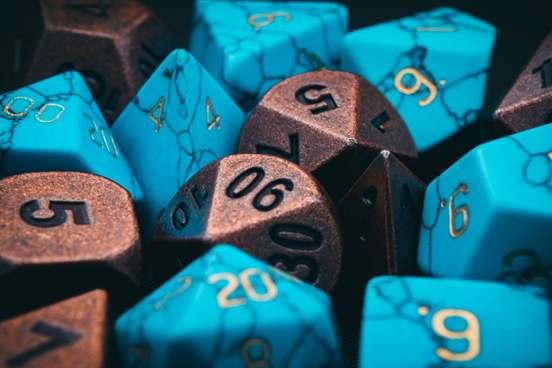
Polyhedral
M-W definition : having the form of a polyhedron : having many faces
The word polyhedron refers to a solid object that is formed by multiple plane (that is, flat or level) faces—with the traditional six-sided die of gaming being a prime example. D&D players use many other multi-faced, polyhedral dice for different purposes in the game, however, not just six-sided cubes. For instance, the four-sided die players refer to as a “D4,” is also called a tetrahedron or caltrop, due to its visual similarity to the four-pointed weapon of the same name. There’s also an eight-sided die (“D8” or octahedron) which looks like two pyramids stuck together, a ten-sided die (“D10” or decahedron), and a twelve-sided die (“D12” or dodecahedron). The star of the show and the most iconic of all polyhedral dice, however, is the twenty-sided die (“D20”). D&D players use this icosahedron for a multitude of purposes, whether their character needs to stab, jump, persuade, or pick a lock. The strength of a D20 roll goes a long way toward determining whether a player’s actions in the game succeed or fail.
A pair of icosahedral (20-sided) dice dating from Roman times are on display in the British Museum. Roughly cubical six-sided Roman dice made of wood, bone, ivory and lead have been discovered. It is possible that polyhedral dice were used by even earlier cultures.
— Nicolae Sfetcu, A Gambling Guide (self-published, 2014)Modern dice, especially since the creation of character games like Dungeons and Dragons, include different shapes and ranges. Dice using shapes other than cubes called polyhedral dice can produce different results. Some of the more common include eight, ten, twelve, and twenty-sided dice but there are even more unusual dice that have three, five, thirty, or even a hundred sides.
— Kenneth P. Langer, 36 New Dice Games (Lulu, 2018)

Eldritch
M-W definition : strange or unnatural especially in a way that inspires fear
Although its origins aren’t completely certain, the adjective eldritch, first recorded in the early 1500s, comes possibly from a Middle English noun meaning “fairyland,” or “kingdom of elves.” While an elfin kingdom doesn’t sound so bad, eldritch is synonymous with eerie, and accordingly in Dungeons & Dragons eldritch monsters come from other realms, corrupted and full of dark powers. There are also playable character types—such as warlocks and “eldritch knights” imbued with evil powers.
The old pine-woods echoed the eldritch scream, and people in distant cottages caught the sound, and listened to the unusual strain, and the wood-choppers ceased from their labors to catch a glimpse of the fleeting fiends that awakened such strange echoes.
— B. P. Shillaber (Benjamin Penhallow), Life and sayings of Mrs. Partington, and others of the family (J. C. Derby, 1854)I’ve been playing D&D for about 20 years now. I put a ton of Dungeons & Dragons Easter eggs into the subtitles [for the television show Stranger Things]. People really focused on “eldritch thrumming.” Eldritch is that sort of arcane, unknowable, vaguely threatening, otherworldly presence. I am going to reveal the depths of how nerdy I am—I apologize in advance—but it’s also the signature spell for a warlock in Dungeons & Dragons. It’s called eldritch blast. The lore of a warlock in Dungeons & Dragons is that they make the deal with an otherworldly power, whether it’s a demon or a powerful fairy lord. So I was like, “Oh, this is the perfect term for that sense of otherworldly power intruding into our world.” — Jeff T., quoted on Netflix.com

Demogorgon
M-W definition : a mysterious spirit or deity often explained as a primeval creator god who antedates the gods of Greek mythology
Genealogia deorum gentilium is a laudable 14th-century genealogy of ancient mythological deities compiled by Giovanni Boccaccio. In it, Boccaccio writes about Demogorgon, a primordial heathen god shrouded in mystery. Thereafter, Demogorgon began to be conjured in Renaissance writings to invoke terror and dread. After the Renaissance, Demogorgon made fewer appearances in the English language, but was by no means forgotten. In D&D Demogorgon is a demon lord, sometimes also called the Prince of Demons, who desires to dominate and corrupt all living things. It’s a large creature with two heads and tentacles for arms. While its tentacle arms and snake-like tail can drain the life from characters who challenge it, the monster can also cast spells. In the television series Stranger Things (2016 – present), which is centered around a group of D&D-playing friends, the Demogorgon is envisioned as a humanoid creature with a fleshy, flower-like head.
As to the more general conception of Demogorgon, we can neither define nor understand it, because Shelley doubtless meant him to represent that background of inscrutable mystery in existence which is at once the source and negation of all our knowledge.
— Vida D. Scully, “The Prometheus Unbound of Shelley,” Atlantic Monthly, August 1892The Prince of Demons, the King of Deviants, Master of the Spiraling Depths—the D&D Demogorgon goes by many names. Before he was an upside-down icon in Stranger Things, Demogorgon was a demonic lesser deity found swimming in the darkness of D&D’s underworld. Wizards of the Coast plucked this two-headed monster from mythology, adding him to the game’s first edition back in 1976.
— Mollie Russell, WarGamer.com, 3 Jan. 2023
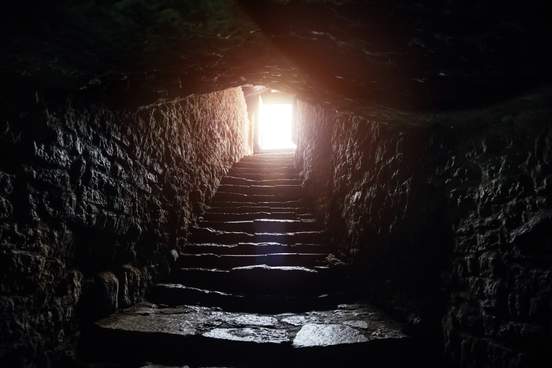
Lich
M-W definition : a dead body, a corpse —used chiefly in combination, as in “lich-house”
In Dungeons & Dragons, an undead lich was often a wizard reanimated after death through the power of necromancy. That’s not too far off from the Old English sense of lich meaning “a dead body.” And just like the archaic word lich is now mostly combined with other words (as in lich-house, meaning “mortuary”), D&D liches are often bound to places, such as secret tombs, haunted labyrinths, or crumbling, abandoned castles. In the game, a lich can summon the spirits of victims who’ve previously died in its lair to attack those who cross its threshold. So, think twice before knocking.
Having discussed the various characteristics which should be possessed by the enclosure wall of a cemetery, and by the residence of its keeper, it is necessary to consider, in the next place, the lich-gate, and the “lich-house” as it is, perhaps, as well as on the whole to call the dead-house.
— The Building News and Architectural Review (London, England), 16 Mar. 1860The lich (rhymes with “itch,” not “ick” or German ich) stands out not only as the alpha undead creature going all the way back to the days of Advanced Dungeons & Dragons but also as the only type of undead creature that’s undead because it wanted to be. It’s what you get when a wizard decides he or she wants to be immortal, reads the fine print on the contract, and says, “Yeah, I’m down with that.” — Keith Ammann, TheMonstersKnow.com, 30 Aug. 2016

Paladin
M-W definition : a trusted military leader (as for a medieval prince)
D&D players have many options for what type of character they want to role-play. Each has different abilities, special skills, limitations, and vulnerabilities. If you want to face a lich in its lair, you’ll need a fighter with physical strength, a strong constitution, and a bit of divine magic—all traits of a paladin. In most RPGs paladins are characterized as both lawful and good. They can be offensive strikers or staunch defenders, and they have access to a limited number of spells, including healing spells. Historically, paladin refers to a trusted military leader, and shares Latin roots with the word palace, among others. It eventually took on an additional, broader sense of “leading champion of a cause.”
… horse and armor, not to mention the trained professional fighting man required to use these instruments effectively, all were costly. Another difficulty was that local institutions often had to be adapted in order to concentrate enough income in the hands of individual fighting men to permit them to purchase and maintain such elaborate equipment. This usually meant subordinating a village, or several villages, to a single strong-armed warrior. But when a truly formidable class of such paladins formed in the countryside, it meant that the will of the central government could not prevail, save on sufferance and with the concurrence of this new military class.
—William H. McNeill, A World History (Oxford University Press, 1967)Paladins choose to follow an oath that determines their designated ‘holy quest’ so they’re not so much dedicated preachers of a particular deity, but rather enthusiasts of a certain way of living. Including a paladin in your D&D party is not a bad shout, particularly when it comes to combat, as the mix of meaty attacks and offensive spellcasting makes for a reliable battle partner.
— Alex Meehan, Dicebreaker.com, 16 Mar. 2023

Encumber
M-W definition : to weigh down or burden
Along with choosing your character’s job class, you’ve got an array of “gear” —including weapons and armor that affect your attributes or “stats” in different ways—to select from. Let’s say you’d rather use a heavy, two-handed weapon: not just a dagger or an axe, but a great big maul or a pike. Well, if you end up carrying gear that is too heavy for the strength of your character—you will be encumbered. And being encumbered in D&D will reduce your character’s speed. That makes sense. When you are “weighed down or burdened,” as encumber is also defined in our dictionary, you simply can’t charge at your enemies (or run from them) as you might have done with lighter armor and weapons. One sense of encumbrance that is specific to D&D can be roughly defined as the state of being encumbered (which can be comparatively measured and represented by a numerical score), while we define its other common meaning as “something that encumbers.”
… Louis and Marie Antoinette put their plan into action. But instead of following Bouill’s advice to make the trip in two light carriages, the queen insisted on keeping the family together in a lumbering coach called a berlin, encumbered with a silver dinner service, a clothes-press, and a small wine chest.
— Richard Covington, Smithsonian, November 2006Encumbrance is a means of determining if a character is capable of easily maneuvering while carrying the contents of their inventory. … Encumbrance is experienced when a character is carrying an amount of weight that exceeds five times a character’s strength score. This means that if a character with a Strength ability score of ten was carrying fifty-five pounds worth of gear, they would be considered encumbered. When encumbered, a character isn’t capable of maneuvering optimally, and their movement speed is reduced by ten.
— Paul DiSalvo, TheGamer.com, 4 June 2022
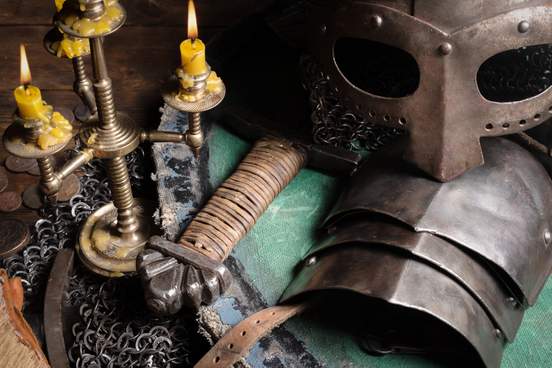
Fluff
M-W definition : something inconsequential
Part of the fun of role-playing a character is imagining how cool they look, including sketching your character or painting a miniature with their sharp and bloodied broadsword or bulky heavy armor. If outfitting your character with a broadsword and heavy armor will leave them encumbered, you can equip lighter gear and then add aesthetic embellishments, known in D&D as “fluff.” Adding fluff, or “something inconsequential” as fluff is defined in our dictionary, won’t change the stats of your weapon or armor, but it can change the look, perception, or history of your items and gear. So, go ahead and carry that light rapier or javelin, but give it fluff in the form of an awesome look, story, or name!
The ideations of play have their own roles in this, ones that seem related to the very processes of change, to changeability itself. In these, the fluff of the make-believe (and cognate ideas) is crucial. However, the unseriousness of play must not be confuted with irrelevance. Its relevance to human existence is this very quality of absence of gravity, of the flux and fluff of ongoing change, of the everpresent sense of the possible.
—Don Handelman, Models and Mirrors: Towards an Anthropology of Public Events (Cambridge University Press, 1990)In terms of play, the fluff is everything. The setting, the lore, the story, the personality, etc. The emphasis is on play, the immersion and enjoyment of the game.
— DxJxC, D&D Beyond (forums), 21 Jan. 2020
